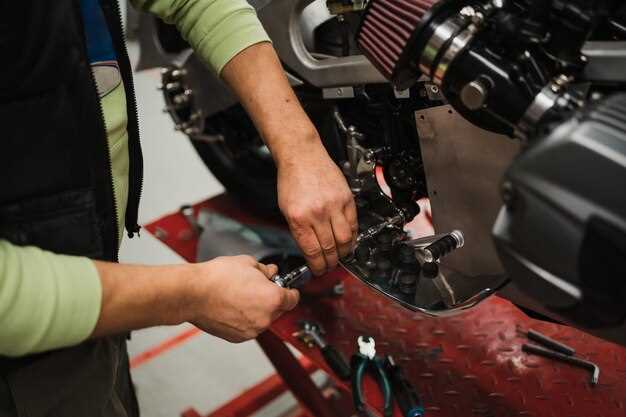
When it comes to maximizing racing performance, the exhaust system plays a crucial role that often goes unnoticed by those outside the world of motorsports. An effective exhaust system is not just about aesthetics or sound; it is a vital component that directly impacts engine efficiency, power output, and overall vehicle dynamics. For racing enthusiasts, selecting the right exhaust setup can mean the difference between standing on the podium and falling behind the competition.
In the racing environment, every fraction of a second counts, and optimizing the exhaust flow is integral to achieving peak performance. Upgrading your exhaust system can enhance your vehicle’s horsepower and torque by reducing backpressure, allowing the engine to breathe freely. This article delves into the key factors to consider when choosing an exhaust system tailored for racing purposes, ensuring that every racer has the knowledge needed to make an informed decision.
Whether you’re focused on drag racing, circuit racing, or off-road challenges, the specifics of your exhaust system can be fine-tuned to suit your unique needs. Factors such as the material quality, pipe diameter, and muffler type all contribute to your overall racing strategy. Understanding these components will help you craft a setup that not only meets your expectations but exceeds them, pushing your vehicle to reach its full potential on the track.
Evaluating Material Types for Weight and Durability
When selecting an exhaust system for racing performance, the choice of material significantly impacts both weight and durability. The two primary materials used in performance exhaust systems are stainless steel and titanium, each offering distinct advantages and drawbacks.
Stainless steel is favored for its durability and resistance to corrosion, making it an excellent choice for longevity in harsh racing conditions. Its heavier weight, while impacting overall performance in terms of acceleration, helps create a robust structure capable of withstanding high temperatures and pressures. Moreover, stainless steel exhaust systems often feature a polished finish that not only enhances aesthetics but also improves performance through smoother exhaust flow.
Titanium, on the other hand, is substantially lighter than stainless steel, which can lead to improved acceleration and handling in racing scenarios. The reduction in weight allows for better power-to-weight ratios, essential for competitive racing. However, titanium is generally more expensive and can be less durable in some environments compared to stainless steel. It offers excellent heat resistance and can withstand significant temperature variations, resulting in consistent performance under demanding conditions.
In addition to these materials, composite materials are emerging in the market. These advanced composites can offer similar benefits in terms of weight savings while maintaining adequate durability. However, their use is more niche and often restricted to specific racing applications where weight reduction is critical.
Ultimately, the choice between these materials will depend on individual racing requirements, budget constraints, and desired performance outcomes. Evaluating the intended use, track conditions, and personal preferences will guide racers in selecting the optimal exhaust system that balances weight and durability for superior racing performance.
Understanding Diameter and Design for Optimal Flow

When selecting an exhaust system for racing performance, two critical factors to consider are the diameter and design of the exhaust pipes. These elements significantly influence the flow of exhaust gases, which in turn affects engine efficiency and overall power output.
The diameter of the exhaust pipes plays a vital role in determining how quickly exhaust gases can exit the engine. A larger diameter can reduce back pressure, allowing gases to flow more freely. This increase in flow rate can enhance engine performance, particularly at high RPMs. However, it’s essential to find a balance; if the diameter is too large, it may lead to a loss of exhaust velocity, which is crucial for scavenge effects during the exhaust stroke.
Design also matters significantly. The configuration of the exhaust system, including bends, merges, and the presence of resonators or mufflers, can impact flow characteristics. Smooth bends and well-designed merges help minimize turbulence and maximize velocity. Additionally, the choice of materials can affect weight and thermal resistance, both of which are vital in a competitive racing environment.
In essence, achieving optimal flow is about harmonizing diameter and design. Properly sized and intelligently designed exhaust systems can transform a good engine into a great one, delivering peak performance and efficiency that racers strive for. Prioritizing these aspects will not only improve lap times but also enhance the overall racing experience.
Assessing Sound Tuning for Track Regulations and Performance

Sound tuning is a crucial aspect when selecting an exhaust system for racing, as it directly affects both performance and compliance with track regulations. Each racing series has specific noise limits that vehicles must adhere to, making it essential to balance sound output with engine efficiency.
The performance of an exhaust system is not solely determined by its diameter or material; the sound produced also influences the vehicle’s overall dynamics. A well-tuned exhaust enhances the engine’s power band, optimizing torque and horsepower while ensuring that the sound levels remain within permissible limits. Engineers often employ resonators and mufflers designed to modify exhaust wavelengths, which can help in achieving the desired sound profile without exceeding noise thresholds.
When assessing sound tuning, it’s important to consider the frequency range of the exhaust note. A low rumble typically indicates strong low-end torque, while a higher-pitched tone may signify responsiveness at higher RPMs. Track regulations often specify not just maximum decibel levels, but also particular sound characteristics, which can limit the choice of exhaust systems available to racers.
Testing and adjusting sound characteristics should be done on a dynamometer to accurately evaluate performance gains alongside noise outputs. This process allows for fine-tuning adjustments to achieve optimal performance without risking disqualification from races due to excessive noise levels. Ultimately, a well-designed exhaust system enhances both the auditory experience and the racing performance, making sound tuning an integral part of the exhaust selection process.



